
Precision Upholstered Dining Chairs: 201 Steel & Vacuum Plating Process
Release Time. 2025-06-25
Our precision manufacturing of upholstered dining chairs includes 201 stainless steel frames (salt spray tested 72hr+) and vacuum plating for lasting elegance. The radiant titanium gold wedding chairs are more than elegant decor for banquets; it's the result of precision engineering.
From the demanding processing of the stainless steel base to the microscopic interaction of titanium and nitrogen in vacuum plating, every step determines its final brilliance and durability. Step inside our workshop and discover how this seat, destined to hold cherished moments, transforms from a cold steel coil into a radiant piece of art.
The manufacturing process for stainless steel dining chairs is more complex than that for wooden or plastic chairs. The key challenge lies in metalworking and surface treatment.
The Precision Journey: Crafting Upholstered Dining Chairs from Steel to Venue-Ready Brilliance
This precision is forged through six uncompromising stages—where 201 stainless steel meets vacuum plating science, and every micron is measured against banquet-ready standards.
1. Material Selection: Scientific Screening of Stainless Steel
During raw material preparation, select 201 stainless steel, with plate/sheet thickness typically ranging from 1.2 to 1.5 mm and tube/pipe wall thickness exceeding 1.0 mm.
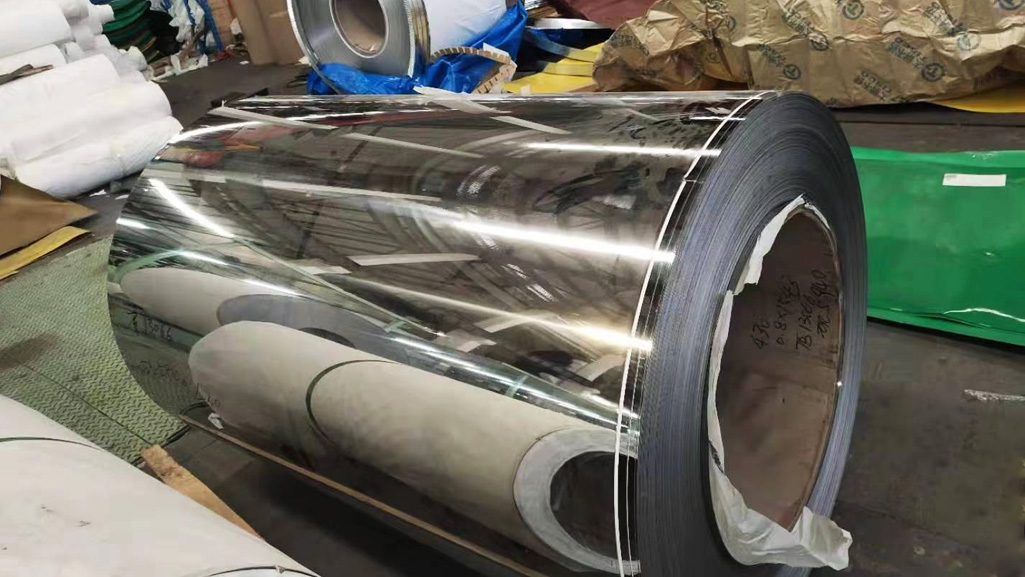
2. Precision Metalworking: Frame Bend Tolerance Control
Material cutting initiates the entire metal dining chair production workflow. In metal furniture manufacturing, two primary cutting methods prevail:
① Laser cutting delivers ±0.05mm precision yet incurs higher costs;
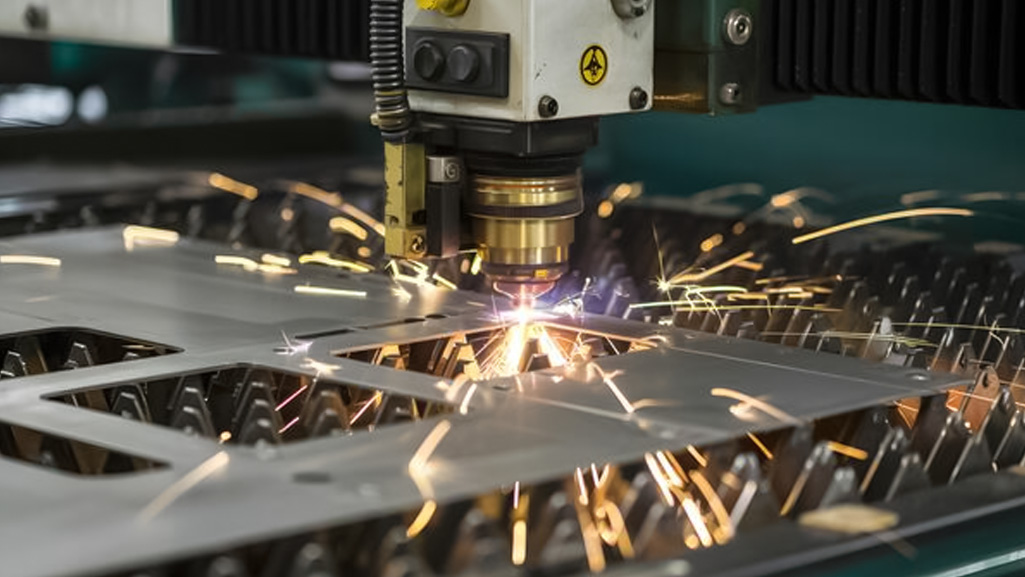
② Stamping proves optimal for high-volume output with its rapid cycle times.
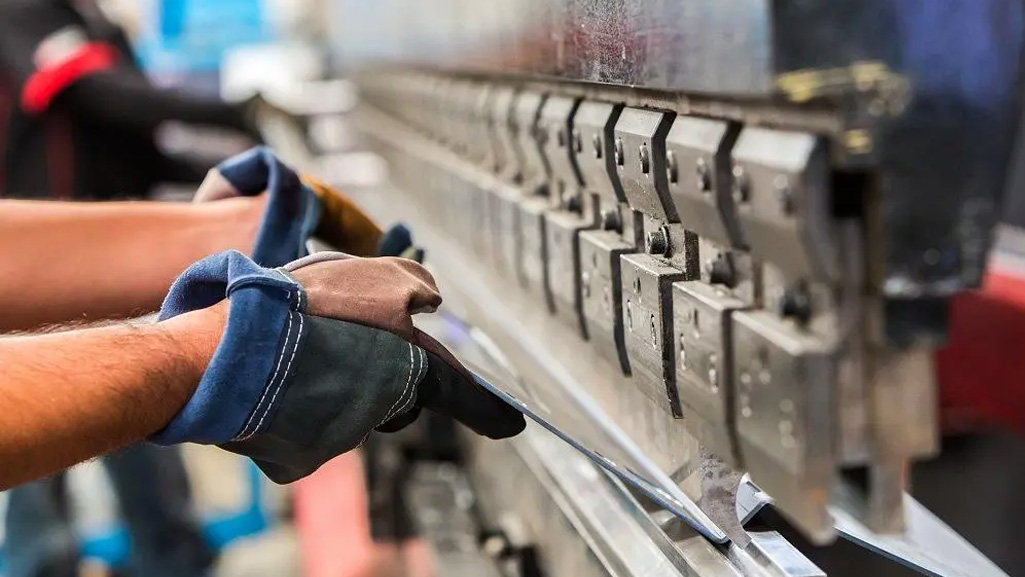
Material-specific cutting approaches differ significantly:
Sheet processing: requires stainless steel coils or plates to be cut into chair seats, backrests, or reinforcement parts via guillotine shears or laser cutters. Laser cutting excels for complex contours due to its micron-level accuracy.
Tube processing: involves sawing/cutting stainless steel round, square, or profiled tubes into legs, armrests, or support rods. Tube-specific cutting machines ensure burr-free ends with length tolerances under ±0.3mm
Forming processes become particularly crucial after completing the cutting step based on material properties and product requirements, as it is a key step determining whether the dining chair meets standards in post-production testing.
Forming processes can be broadly categorized into:
Stamp Forming
Tube Bending
Press Brake Bending
**▸ Tube Bending for Curved Structures (Chair Legs)**
Springback Control: Tube bending machines must account for springback rates during bending.
Equipment Types: Manual, hydraulic, or CNC-controlled tube benders. CNC tube bending offers the highest precision, suitable for mass-producing complex curves.
**▸ Stamped Ergonomic Contours (Seats & Backrests)**
Progressive Deep Drawing: Required to avoid stainless steel cracking, involving multiple stages of gradual stretching.
Functional Features: Forms ergonomic curves, grooves, or stiffening ribs using presses and dies. Multiple processes may be required.
**▸ Precision Folding for Brackets (Connectors/Small Supports)**
Utilizes press brakes for bending sheet metal components.
3.Welding & Assembly: Seamless Techniques for Structural Integrity
When you choose wedding or banquet chairs, seamless welding isn't just technique – it's the invisible promise that keeps celebrations safe and joyful.
Step-by-Step Craftsmanship for Lasting Comfort
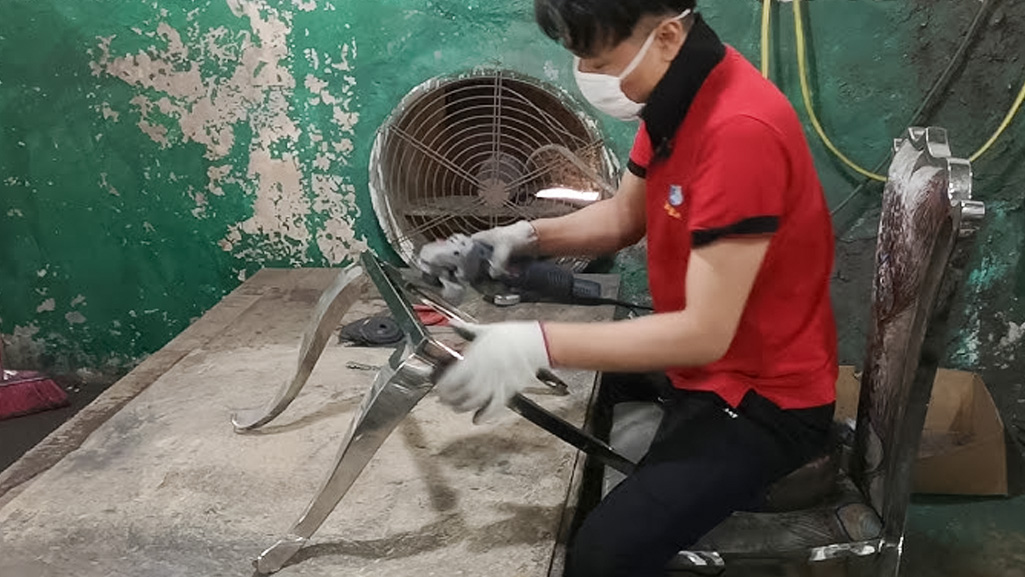
- Precision Alignment
Every component (legs, crossbars, seat frame) is temporarily fixed like puzzle pieces – ensuring perfect angles before permanent bonding. No wobbles, no uneven legs!
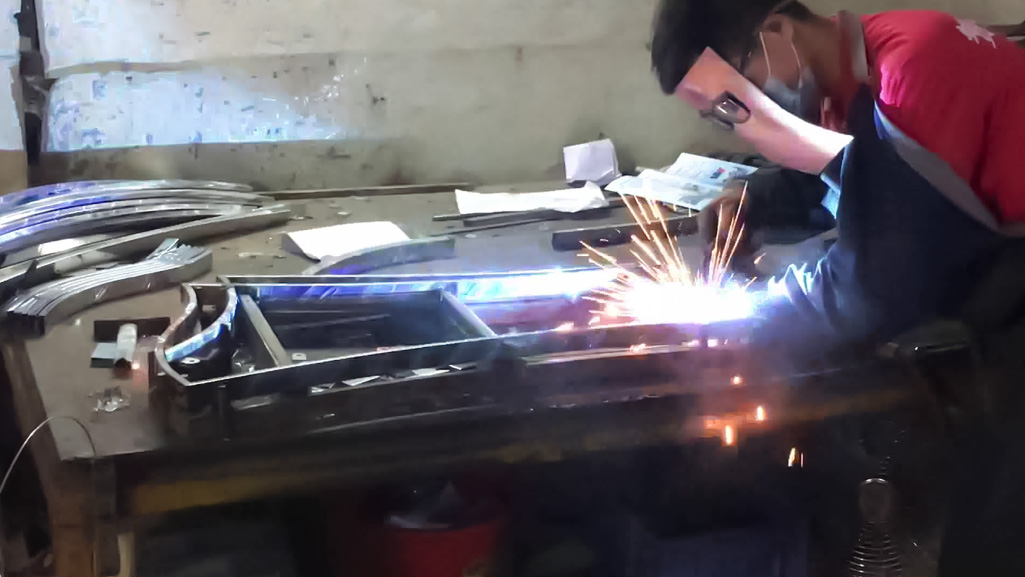
- Artisan-Grade Welding
Zero weak spots: Continuous beads prevent cracks even after years of banquets
No oxidation: Pure argon gas creates stainless steel's "eternal youth serum"
Hidden bonus: These seams won't snag delicate wedding gowns or table linens!
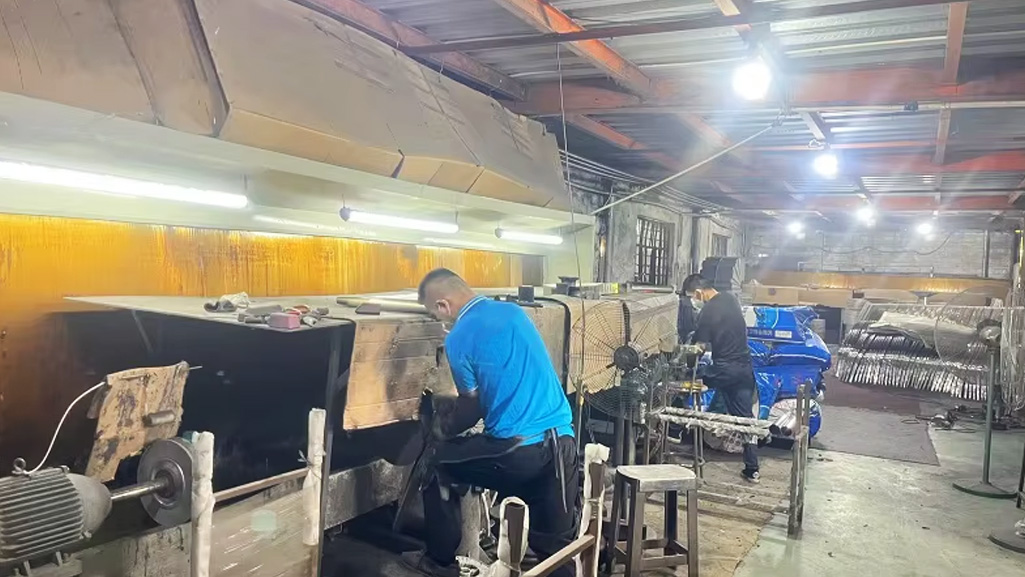
- Meticulous Polishing
1.Rough grinding to remove weld bumps
2.Fine sanding to erase microscopic pores
3.Mirror buffing until it reflects your champagne flute
4. Vacuum Plating Science: Corrosion & Scratch Resistance
After shaping, welding, and grinding, the chair frame is formed. To enhance its luxury appeal in banquet/restaurant lighting and improve scratch resistance, we apply color coating. Pre-treatment is critical to avoid black streaks after plating.
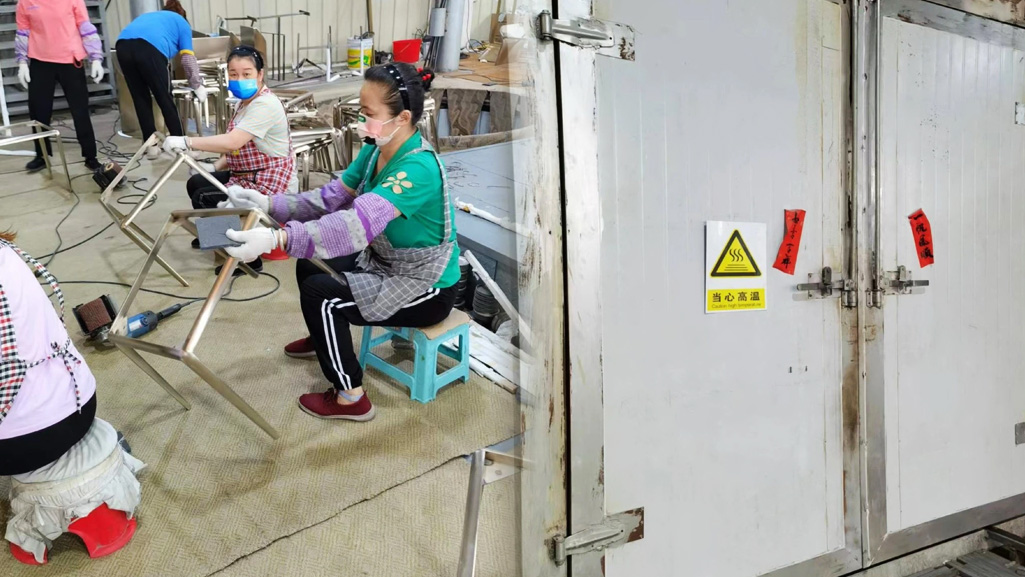
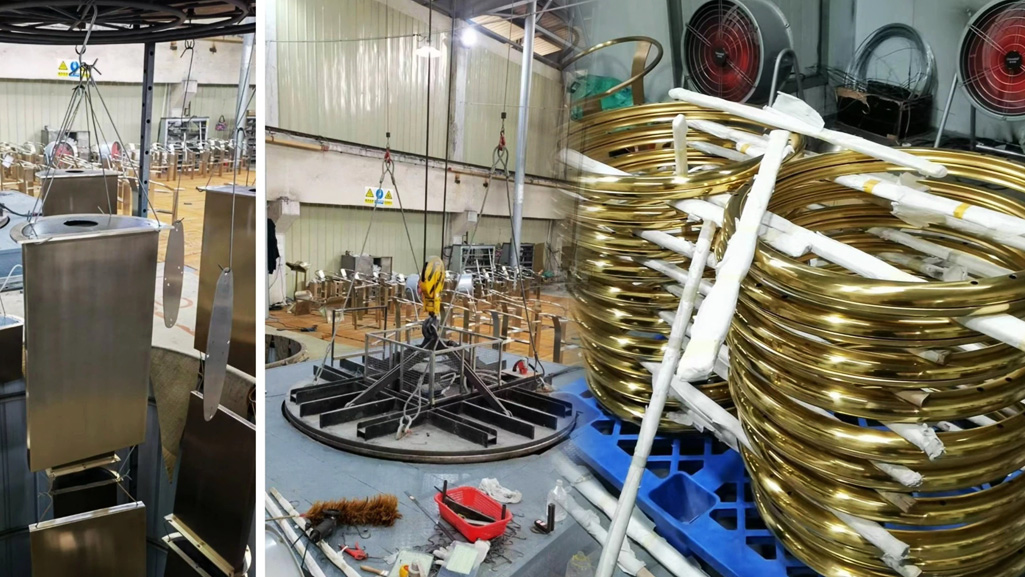
5-Step Pre-Treatment
① Degreasing: Remove oil, grease, and fingerprints with alkaline/metal-specific cleaners.
② Pickling & Passivation:
Pickling: Eliminate welding oxides (black spots) and free iron ions to restore stainless steel’s natural color.
Passivation: Form a corrosion-resistant chromium oxide layer using nitric acid-based solution. This prevents rust long-term.
③ Electropolishing (Optional): Electrochemically dissolve micro-protrusions for higher smoothness and corrosion resistance. Note: Adds cost.
④ Polishing: Achieve uniform surface for plating adhesion.
⑤ Vacuum Plating Specifications:
Titanium Gold Coating: 0.8-1.2μm thickness
<0.8μm: Greenish tint ❌
>1.2μm: Edge chipping risk ❌
Corrosion Resistance: ≥72-hour salt spray resistance (mandatory for restaurant cleaning agents).
5.Assembled & Quality Control: Durability Testing from Lab to Venue
For upholstered dining chairs, assembly begins with high-density foam (40mm thickness) cut and bonded to waterproof faux-leather/velvet fabrics via high-frequency pressing, then screw-fastened to metal seat frames. Hardware integration includes stainless steel nut installation and TPU non-slip feet (75A Shore hardness) mounting.
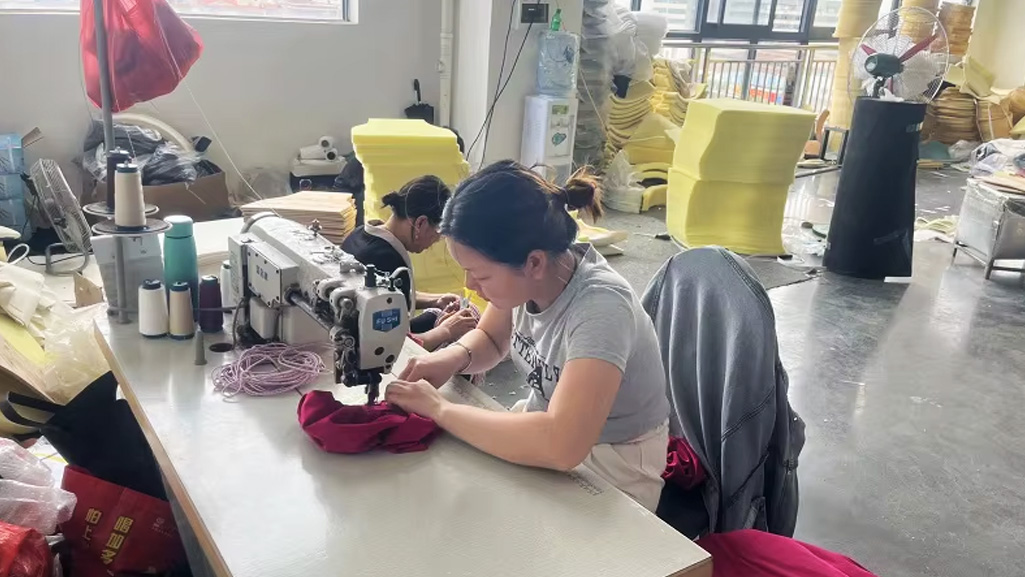
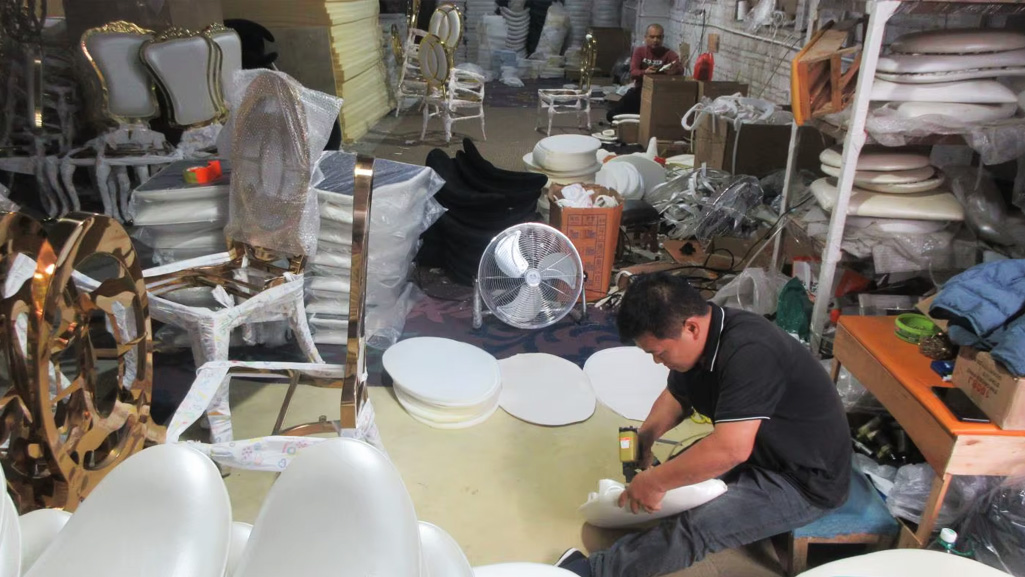
Quality validation comprises three rigorous tiers:
Structural Testing
✔ 100,000-cycle compression fatigue simulation on chair legs
✔ Load-bearing tests (static ≥150kg / dynamic 90kg drop)
✔ Stability validation: 10° front/rear tilt & 6° lateral sway resistance
Corrosion Resistance Audit
✔ Random salt spray testing per ASTM B117 (≥72hr for restaurant-grade durability)
✔ Passivation efficacy checks: chromium oxide layer ≥0.5μm thickness
Aesthetic Inspection
✔ Surface integrity: Zero scratches, fingerprints, or weld marks
✔Dimensional tolerance: Frame alignment within ±1.5°
✔ Finish uniformity: Consistent sheen across all visible surfaces
6.Damage-Proof Packaging & Sustainable Shipping
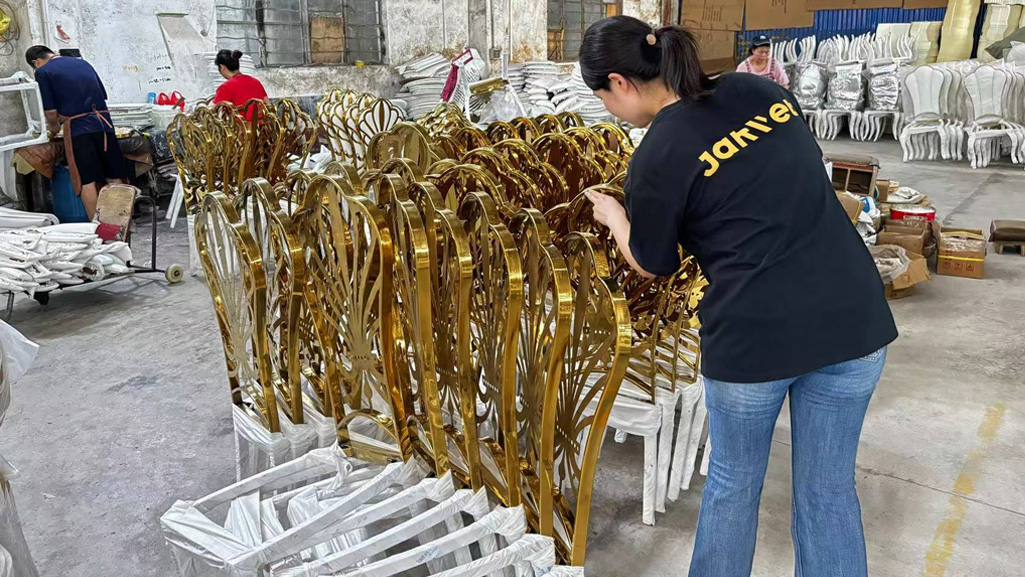
After final dust-free inspection using anti-static wipes, each chair undergoes triple-layer protection:
① PE film applied to plated surfaces prevents micro-scratches during transit
② Component-specific EPE foam wrapping (6mm thickness) cushions high-impact zones
③ Custom 5-ply corrugated boxes with recycled content ≥85% house chairs in chair-in-box (CIB) or flat-pack configuration
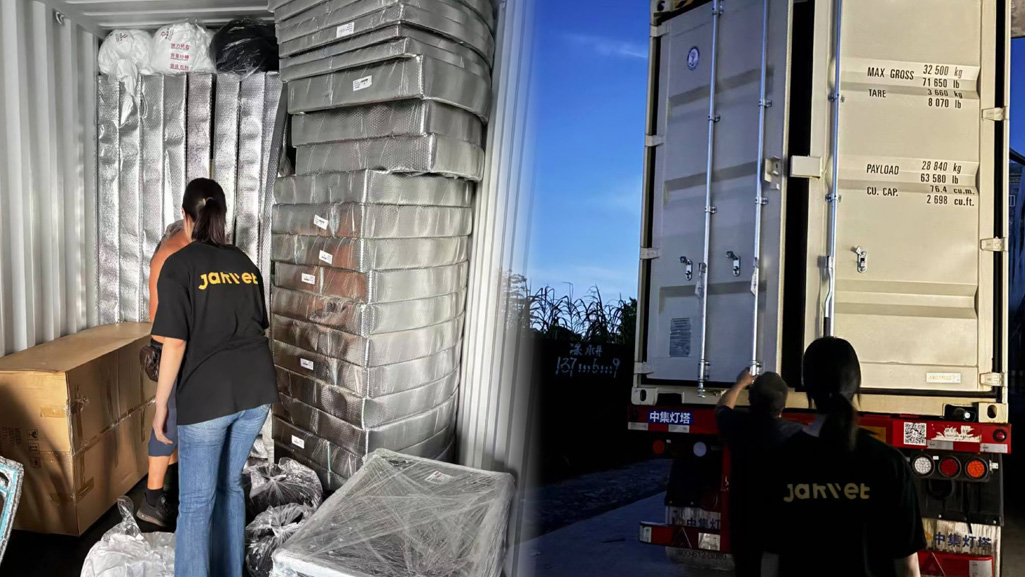
Transport safeguards include:
Edge protection: Paper corner guards (300g/m² burst strength)
Void fill: Recycled honeycomb paper pads eliminating plastic bubble film
Carbon footprint labels on cartons for logistics optimization

